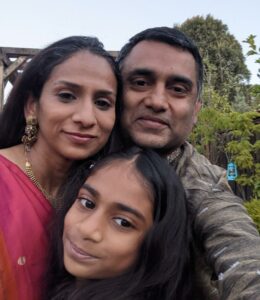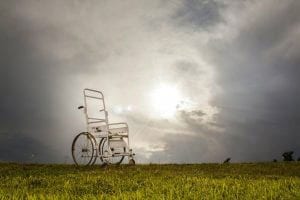I’ve known people to almost faint at the mention of words like “cancer,” “heart disease,” or “dementia,” imagining the uncertainty of one’s fate when confronted with these awful diseases. Now imagine facing a similarly threatening diagnosis, with the added vulnerability that few people have ever heard of your condition. This is the experience of those patients with the unique set of symptoms diagnosed as GNE myopathy (commonly called GNEM), “a rare, inherited disease that causes progressive muscle weakness” (The Neuromuscular Disease Foundation). GNEM has been receiving press attention lately for two reasons: it’s uniquely challenging to diagnose and because of the recent progress made by Beverly Hills based organization the Neuromuscular Disease Foundation (NDF) in its efforts to deliver the first effective therapy to end the disease’s progression in affected patients. As NDF’s Executive Director Geoffrey Gee, Esq. puts it, “It’s certainly an exciting time for those in the GNEM community.” At the same time, patients like Mangesh Ghiware are feeling the unique challenges of this adult-onset disease.
Ghiware, a software professional at Google who lives in the San Francisco Bay area, first noticed changes while going about his routine yoga practice. “There was this one position that became difficult,” he remembers. The pose required him to lift and bend his leg at the knee. The otherwise healthy 34 year old suddenly could not do it. Slowly, other oddities presented themselves. While playing tennis, he would experience difficulty keeping a strong grip on his racquet. Mangesh sought the attention of a few doctors. They ran some tests. There was no conclusive diagnosis, and his daily activities weren’t dramatically impeded. He continued to follow leads on what might be happening, but otherwise proceeded unfettered by his symptoms. Three to four years later, Ghiware grew more concerned. He was having severe pain in his shins during his runs. One morning, he found himself unable to tie his shoelaces. He and his wife knew they needed answers. This time, they sought the medical advice of physicians at Stanford Health Care. After multiple MRIs, EMGs and muscle biopsies, the experts had narrowed Ghiware’s diagnosis to a few possible diseases. ALS and LGMD were among them, as was GNEM, which was known as HIBM2 at that time. Ghiware was beginning to understand that his life was going to change dramatically once his diagnosis was confirmed. Finally, his medical team conducted a gene panel. Five years after the onset of his symptoms, Ghiware received his diagnosis: GNE myopathy.
 Ghiware is bright-eyed, soft spoken and grounded. He gives the impression of someone who is calm and centered. He has accomplished enough in his life to have the confidence of knowing that he can accept any changes yet to come. By 2015, he knew his diagnosis. He could still go cycling, hiking, and live a full life. But he also understood that he would need to mentally prepare himself for health challenges in his future. “It was tough,” he recalls, “but we’ve managed to adapt. The harder part of the journey still lies ahead”. GNEM is a late onset disease and typically, patients experience the onset of symptoms during their twenties. Given the commonly delayed route to a definitive diagnosis that is prevalent among GNEM patients, by the time a patient is aware of their condition, they may be in their late twenties or thirties.
Ghiware is bright-eyed, soft spoken and grounded. He gives the impression of someone who is calm and centered. He has accomplished enough in his life to have the confidence of knowing that he can accept any changes yet to come. By 2015, he knew his diagnosis. He could still go cycling, hiking, and live a full life. But he also understood that he would need to mentally prepare himself for health challenges in his future. “It was tough,” he recalls, “but we’ve managed to adapt. The harder part of the journey still lies ahead”. GNEM is a late onset disease and typically, patients experience the onset of symptoms during their twenties. Given the commonly delayed route to a definitive diagnosis that is prevalent among GNEM patients, by the time a patient is aware of their condition, they may be in their late twenties or thirties.
Today, Ghiware is able to drive to work and to walk. He considers himself fortunate that his career accommodates his working from home a few days each week. He is also grateful to have a loving and supportive wife, who is bravely shouldering the added workload in their lives. Another blessing he mentions is having his brother and his family live nearby and always ready to help.
This is part one of a two part story. Stay tuned for part two!







